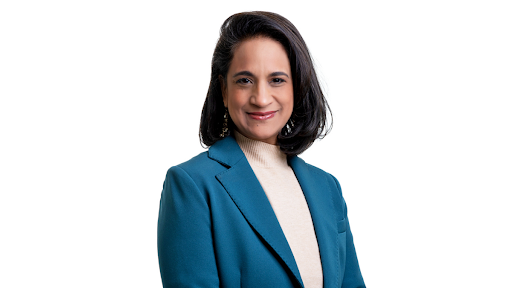Lifestyle
Dr. Mona Jhaveri Explains The Future of Telemedicine: Benefits, Challenges, and Growth Potential

The scourge of cancer continues to affect people in the United States, with an estimated 19 million new diagnoses in 2022 alone. Over the past century, countless people have believed that medical research would help drive the search for new treatments and the hope for an eventual cure for cancer. And while this belief does hold some truth, there has been a renewed focus on the role of health technology in discovering treatments and eventual cures.
One of the most significant tech moves in the healthcare space — particularly in the last few years — has been telemedicine. Its efficacy and popularity ballooned during the pandemic, with telehealth encounters growing over 700% in the first three months.
Now, there is growing support for the benefits of telemedicine for those experiencing a cancer diagnosis as well. Dr. Mona Jhaveri, founder and director of Music Beats Cancer, a non-profit cancer research funding organization, believes the current labyrinthian process that patients must undergo to receive a referral, see a doctor, and have their prescriptions filled is one that is long overdue for change.
“With telemedicine, it’s easier than ever to get access to help and medications,” Dr. Jhaveri explains. “Telemedicine has made the entire process faster and more affordable for millions of people.”
The benefits of telemedicine
When one receives a new cancer diagnosis, time is often of the essence. Depending on what stage they may be experiencing — and if the cancer has spread — patients may only have a matter of days or weeks to arrange comprehensive care and prescription delivery, but the referral and scheduling process can be frustratingly complex and time-consuming. In addition, waiting weeks to see a specialist is something most cancer patients cannot afford.
With telemedicine, patients can gain faster and more efficient access to the referrals and specialists they need, especially those living in rural or remote areas. Through teleconferencing, patients do not need to leave their homes in order to speak to doctors, attend appointments, or receive referrals. Instead, the patient’s team of specialists can often be one click away, saving precious time and upwards of thousands of dollars over the course of one’s cancer treatment.
In a recent study, it was shown that the average telemedicine visit saves patients between $147 to $186 per incident. Telemedicine also provides patients with significant savings in regard to travel costs, medical visit expenses, and lost income from having to miss work.
According to Dr. Jhaveri, telemedicine is also remarkably beneficial for pharmaceutical services. “While prescription deliveries have been a standard in cancer care for some time,” she says, “advances in telemedicine have allowed physicians to better virtually monitor progress and quickly change prescriptions that may not be effective for a patient.” She adds that, with telemedicine, pharmacists can also take a larger role on a patient’s cancer care team, gaining virtual access to patients in order to answer questions and monitor their use of medications.
Dr. Jhaveri and Music Beats Cancer recently joined forces with TeleMedicX to raise funds for their HIPPA-compliant telemedicine platform VirtualCliniX, with the aim to provide faster access referrals for cancer patients on the islands of Hawaii. Because many areas of Hawaii are remote, the capabilities of telemedicine are especially welcomed. With Music Beats Cancer, Dr. Jhaveri has been able to find potential solutions to funding issues for telemedicine technologies like what TeleMedicX is offering to the islands’ residents.
“For cancer patients living far from state-of-the-art medical hubs, locating and transferring medical records to healthcare specialists is daunting, so half of all patients simply discontinue the care they need,” Dr. Jhaveri stated in a recent press release about Music Beats Cancer’s partnership.
For patients with cancer, healing cannot possibly come without access. This is the cause Music Beats Cancer is hoping to shed light on.
Breaking through the funding bottleneck
Though telemedicine lends itself to cost savings in the long run, there is an upfront cost for providers who wish to implement the technology for their patients — one of the major hurdles that telemedicine implementation must overcome. Because the widespread use of telemedicine is still in its relative infancy, insurance companies have been slow to adapt their coverage policies, while some have even rolled back coverage after the COVID-19 pandemic.
Dr. Jhaveri is no stranger to having run into funding bottlenecks, herself. In fact, those bottlenecks are the entire reason why she first founded Music Beats Cancer.
As Dr. Jhaveri told Entrepreneur’s Break, “Before I started a crowdfunding charity, I launched a biotech to produce a cure for ovarian cancer. A funding bottleneck stood between academic research and real-world innovation, and I experienced it first-hand,” she says. “I knew we faced a systemic problem in funding the war on cancer, and everyone in the industry knew it as well. I had a gut feeling things would change if the public became aware.”
The public became acutely aware of the life-saving impact telemedicine had during the pandemic. Now that its benefits have been so heavily publicized, Dr. Jhaveri is hopeful that funding efforts will be well-received — especially for cancer patients who stand to most benefit from the time and money savings that telemedicine provides.
Growth potential
Even though the pandemic has waned, those in the cancer treatment space have continued to recognize and champion the benefits of continued telemedicine use. Dr. Jhaveri began Music Beats Cancer as a way to increase cancer treatment accessibility and transform funding, and the incredible growth potential of telemedicine for cancer care is a core focus of hers going into 2024.
“It’s going to be a field that expands and will have its place in medicine,” Dr. Jhaveri explains. “It has been especially fruitful in areas where people are underserved or for people at or below the poverty line.”
Indeed, poverty has been shown to be a risk factor for certain cancers, making accessible and affordable access to one’s medical team and prescriptions even more important.
Music Beats Cancer has made tremendous strides in platforming innovation, revolutionizing cancer screening, and raising awareness. Those who are fighting cancer, be they patients or providers, cannot afford to weather the funding gaps that stand in the way of innovation. Through strategic partnerships and continued support from independent music artists, Dr. Jhaveri and Music Beats Cancer will continue to champion and fund technology that can truly enhance access to treatment and the betterment of the quality of life for cancer patients.
Lifestyle
Wanda Knight on Blending Culture, Style, and Leadership Through Travel

The best lessons in leadership do not always come from a classroom or a boardroom. Sometimes they come from a crowded market in a foreign city, a train ride through unfamiliar landscapes, or a quiet conversation with someone whose life looks very different from your own.
Wanda Knight has built her career in enterprise sales and leadership for more than three decades, working with some of the world’s largest companies and guiding teams through constant change. But ask her what shaped her most, and she will point not just to her professional milestones but to the way travel has expanded her perspective. With 38 countries visited and more on the horizon, her worldview has been formed as much by her passport as by her resume.
Travel entered her life early. Her parents valued exploration, and before she began college, she had already lived in Italy. That experience, stepping into a different culture at such a young age, left a lasting impression. It showed her that the world was much bigger than the environment she grew up in and that adaptability was not just useful, it was necessary. Those early lessons of curiosity and openness would later shape the way she led in business.
Sales, at its core, is about connection. Numbers matter, but relationships determine long-term success. Wanda’s time abroad taught her how to connect across differences. Navigating unfamiliar places and adjusting to environments that operated on different expectations gave her the patience and awareness to understand people first, and business second. That approach carried over into leadership, where she built a reputation for giving her teams the space to take ownership while standing firmly behind them when it mattered most.
The link between travel and leadership becomes even clearer in moments of challenge. Unfamiliar settings require flexibility, quick decision-making, and the ability to stay calm under pressure. The same skills are critical in enterprise sales, where strategies shift quickly and no deal is ever guaranteed. Knight learned that success comes from being willing to step into the unknown, whether that means exploring a new country or taking on a leadership role she had not originally planned to pursue.
Her travels have also influenced her eye for style and her creative pursuits. Fashion, for Wanda, is more than clothing; it is a reflection of culture, history, and identity. Experiencing how different communities express themselves, from the craftsmanship of Italian textiles to the energy of street style in cities around the world, has deepened her appreciation for aesthetics as a form of storytelling. Rather than keeping her professional and personal worlds separate, she has learned to blend them, carrying the discipline and strategy of her sales career into her creative interests and vice versa.
None of this has been about starting over. It has been about adding layers, expanding her perspective without erasing the experiences that came before. Wanda’s story is not one of leaving a career behind but of integrating all the parts of who she is: a leader shaped by high-stakes business, a traveler shaped by global culture, and a creative voice learning to merge both worlds.
What stands out most is how she continues to approach both leadership and life with the same curiosity that first took her beyond her comfort zone. Each new country is an opportunity to learn, just as each new role has been a chance to grow. For those looking at her path, the lesson is clear: leadership is not about staying in one lane; it is about collecting experiences that teach you how to see, how to adapt, and how to connect.
As she looks to the future, Wanda Knight’s compass still points outward. She will keep adding stamps to her passport, finding inspiration in new cultures, and carrying those insights back into the rooms where strategy is shaped and decisions are made. Her legacy will not be measured only by deals closed or positions held but by the perspective she brought, and the way she showed that leading with a global view can change the story for everyone around you.
-

 Tech5 years ago
Tech5 years agoEffuel Reviews (2021) – Effuel ECO OBD2 Saves Fuel, and Reduce Gas Cost? Effuel Customer Reviews
-

 Tech6 years ago
Tech6 years agoBosch Power Tools India Launches ‘Cordless Matlab Bosch’ Campaign to Demonstrate the Power of Cordless
-

 Lifestyle6 years ago
Lifestyle6 years agoCatholic Cases App brings Church’s Moral Teachings to Androids and iPhones
-

 Lifestyle5 years ago
Lifestyle5 years agoEast Side Hype x Billionaire Boys Club. Hottest New Streetwear Releases in Utah.
-

 Tech7 years ago
Tech7 years agoCloud Buyers & Investors to Profit in the Future
-

 Lifestyle5 years ago
Lifestyle5 years agoThe Midas of Cosmetic Dermatology: Dr. Simon Ourian
-

 Health7 years ago
Health7 years agoCBDistillery Review: Is it a scam?
-

 Entertainment6 years ago
Entertainment6 years agoAvengers Endgame now Available on 123Movies for Download & Streaming for Free
